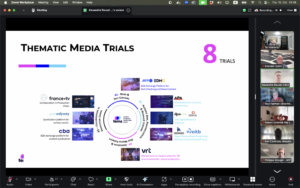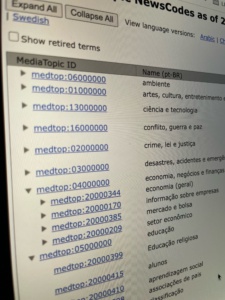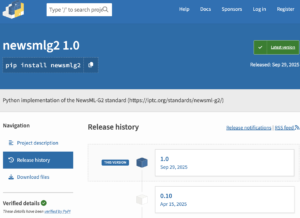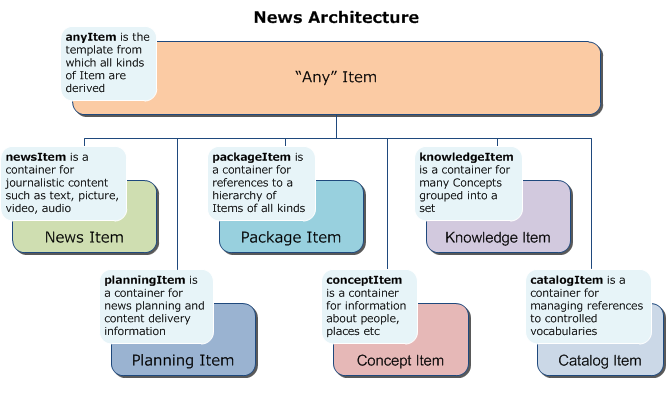Categories
Archives

Last week saw the 60th Annual General Meeting of IPTC, held as part of the IPTC Autumn Meeting 2025. The event was held online from Tuesday 14th to Thursday 16th October.
As one could imagine, AI was the hot topic, being mentioned in almost every presentation.
Highlights included:
- Hearing the latest on the TEMS Media Dataspace project, including an overview of the data model, which is of interest to IPTC members due to its mappings to many IPTC standards;
- Hearing the latest from the IPTC Media Provenance Committee and its three working groups, with updates on the Verified News Publisher List and the recent Media Provenance Summits;
- A presentation on “vibe coding” and AI-assisted development, including it being used to update many of IPTC’s tools and services;
- Discussions on a possible new publisher metadata best practice, an update on our AI preferences work and the IETF AI Preferences Working Group;
- We also heard from StoryGo, Copyright Exchange, Global Media Identifier, Time Addressable Media Store, and the IBC Accelerator “Stamping Your Content” project that focused on bringing C2PA metadata to broadcast video content, with many IPTC member organisations as participants.
At the Standards Committee meeting, members voted to approve three new IPTC standard versions: Video Metadata Hub 1.7, Photo Metadata 2025.1, and ninjs version updates. The Photo and Video Metadata updates are to add new properties for AI Prompts and AI models used to create synthetic content. The ninjs updates were to add “resources” to renditions, to cover for example multiple audio tracks or a subtitle feed as part of a live video stream. These updates will be announced separately when they are published.
At the 2025 Annual General Meeting, the Board was re-elected by all Voting Members. Members heard updates from IPTC Managing Director Brendan Quinn and the Chair of IPTC’s Board of Directors, Robert Schmidt-Nia. The 2026 budget was approved and a change to IPTC’s Articles of Association was voted through.
Thanks very much to all who participated and presented their work, and to all IPTC Working Group and Committee members who contributed to the event.
We’re already looking forward to the IPTC Spring Meeting 2026, which will be held in Toronto, Canada, hosted by Thomson Reuters.

The NewsCodes Working Group is pleased to release the Q3 2025 update to our NewsCodes vocabularies.
MediaTopics updates
As usual most of the updates are to the Media Topic vocabulary.
New concepts (3)
Retired concepts (1)
- water –
Label changes (3)
- hazardous materials -> hazardous material
- waste materials -> waste material
- pests -> pest and pest control
Definition changes (16)
- environment
- environmental pollution
- air pollution
- environmental clean-up
- hazardous material
- water pollution
- nature
- ecosystem
- endangered species
- invasive species
- animal disease
- plant disease
- animal
- flowers and plants
- pest and pest control
- sustainability
Modified notes (2)
animal disease,
pest and pest control
No concepts were retired, had hierarchy moves or modified wikidata mappings this time.
Translation updates
Many terms and definitions in the German translation were updated to reflect recent changes in the English versions.
Norwegian and Swedish terms were updated to reflect recent changes in the English versions.
2025-Q2 updates recap
It seems that we didn’t post a news item about the 2025-Q2 changes to Media Topics. Here’s a summary:
- New term vegetarianism and veganism
- climate change – definition changed
- global warming retired. Use climate change instead.
- conservation – definition changed
- energy saving – retired. Use medtop:20001374 sustainability instead.
- parks -> nature preserve
- New Term: park and playground (Child of leisure venue medtop:20000553)
- natural resources -> natural resource
- energy resources retired. Use the relevant term from the business branch instead.
- land resources retired.
- forests -> forest. Moved to be child of nature.
- mountains -> mountain. Moved to be child of nature.
- population growth – retired. Use “population and census” instead.
- oceans -> ocean. Moved to be child of nature.
- rivers -> river. Moved to be child of nature.
- wetlands -> wetland. Moved to be child of nature.
- mankind -> demographic group.
Trust Indicator updates
The Trust Indicator vocabulary had one hierarchy change: factCheckingPolicy was made a child of editorialPolicy.
Also, the notes on terms have been updated to give credit to The Trust Project for their work and to indicate that the term “Trust Indicators®” is now a registered trademark of The Trust Project.
Working with IPTC NewsCodes
See the official Media Topic vocabulary on the IPTC Controlled Vocabulary server, and an easier-to-navigate tree view. An Excel version of IPTC Media Topics is also available. Other NewsCodes are available via the CV Server .
See the IPTC NewsCodes Guidelines document for information on our vocabularies and how you can use them in your projects.

IPTC’s Python library for creating manipulating and managing NewsML-G2 documents, python-newsmlg2, has reached version 1.0.
The earliest versions of the library were created back in 2021, but the code has seen significant changes over that period and we are happy to endorse the latest version as a production-ready 1.0 release.
Created as free, open source library that can be integrated into any Python code, the library supports all parts of the NewsML-G2 specification:
- multi-media news stories (NewsItem)
- packages of news content (PackageItem)
- planned news coverage and information about upcoming and past events (PlanningItem and EventsML-G2)
- news content classification concepts and sets of concepts (knowledge graphs) (ConceptItem, KnowledgeItem and CatalogItem)
- syndicated news content transactions (NewsMessage)

The 1.0 version has 98% unit test coverage, which can give users confidence that future changes will not introduce regression bugs.
The code can also handle non-NewsML-G2 content embedded within NewsML-G2 files using XML Schema’s “xs:any” construct. This is a feature of NewsML-G2 that allows any type of markup, such as but not limited to XHTML, NITF or RightsML, to be carried as the payload in a NewsML-G2 NewsItem. The 1.0 version adds “round-trip” support of all xs:any constructs allowing additional markup to be captured, retained and output verbatim, without any loss of fidelity.
The library’s documentation also gives examples of how the library can be used to create, process, manipulate and output NewsML-G2 documents.
The code offers some “helper functions” that make working with NewsML-G2 easier, such as:
- Automatic resolution between QCodes and URIs, two equivalent formats for controlled vocabulary terms, that can now be used interchangeably. The code uses NewsML-G2 Catalogs to look up QCode prefixes and resolve them to URI format.
- Automatic handling of repeatable items and traversal of the NewsML-G2 element structure to provide easy access to child elements such as “
digsrctype = newsitem.contentmeta.digitalsourcetype.uri“
The library can be installed by any Python user using PyPI: pip install newsmlg2.
The source code of the library is freely available, licensed under the open-source MIT licence, at https://github.com/iptc/python-newsmlg2.
Feedback on the library is very welcome. Please let us know what you think on the IPTC Contact Us page or the public NewsML-G2 discussion list.
Categories
Archives
- December 2025
- November 2025
- October 2025
- September 2025
- August 2025
- July 2025
- June 2025
- May 2025
- April 2025
- March 2025
- February 2025
- January 2025
- December 2024
- November 2024
- October 2024
- September 2024
- August 2024
- July 2024
- June 2024
- May 2024
- April 2024
- March 2024
- February 2024
- December 2023
- November 2023
- October 2023
- September 2023
- August 2023
- July 2023
- June 2023
- May 2023
- March 2023
- February 2023
- January 2023
- December 2022
- November 2022
- October 2022
- September 2022
- August 2022
- July 2022
- June 2022
- May 2022
- April 2022
- March 2022
- February 2022
- January 2022
- December 2021
- November 2021
- October 2021
- September 2021
- August 2021
- July 2021
- June 2021
- May 2021
- April 2021
- February 2021
- December 2020
- November 2020
- October 2020
- September 2020
- August 2020
- July 2020
- June 2020
- May 2020
- April 2020
- March 2020
- February 2020
- December 2019
- November 2019
- October 2019
- September 2019
- July 2019
- June 2019
- May 2019
- April 2019
- February 2019
- November 2018
- October 2018
- September 2018
- August 2018
- July 2018
- June 2018
- May 2018
- April 2018
- March 2018
- January 2018
- November 2017
- October 2017
- September 2017
- August 2017
- June 2017
- May 2017
- April 2017
- December 2016
- November 2016
- October 2016
- September 2016
- August 2016
- July 2016
- June 2016
- May 2016
- April 2016
- February 2016
- January 2016
- December 2015
- November 2015
- October 2015
- September 2015
- June 2015
- April 2015
- March 2015
- February 2015
- November 2014